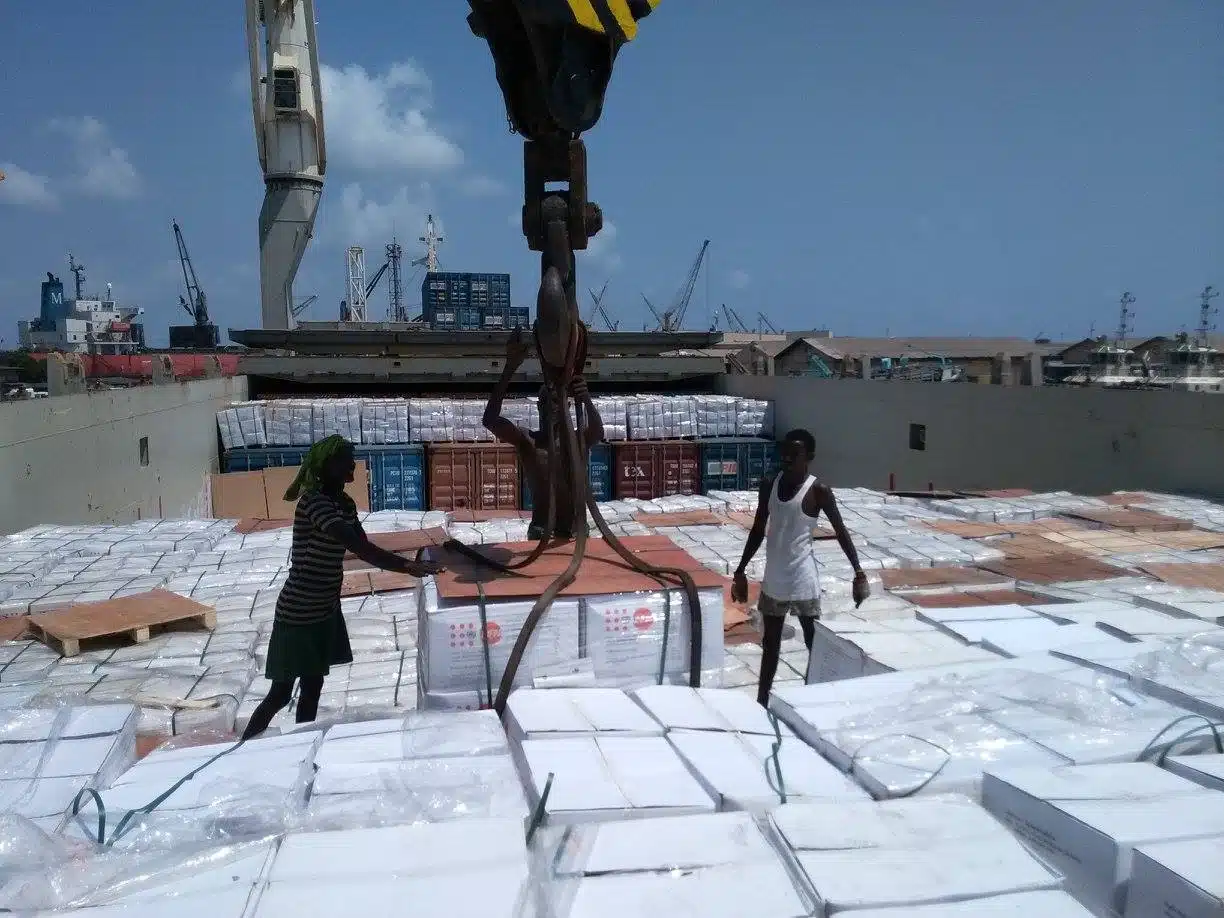Effective flood response depends on strong logistics. In this article, JBA’s Thomas Debandt shares insights from humanitarian operations across Asia and Africa, exploring how supply chains enable preparedness, early action and recovery.

Ready to discuss your next project? Contact our team today.
Floods are among the most disruptive climate-related hazards, often arriving with little warning and cascading rapidly through communities, infrastructure and services. In the hours and days that follow, the ability to deliver emergency supplies – safely, quickly and in the right quantities – can shape the entire course of response and recovery.
Despite their importance, humanitarian supply chains are often overlooked in broader flood resilience planning. Their role in strengthening preparedness and enabling fast, coordinated action is critical, especially in high-risk, low-resource settings.
This article draws on the operational experience I gained from humanitarian emergencies across Asia and Africa, working with various international emergency response organisations.
Flood emergencies present a unique set of logistics challenges. Roads can be cut off, storage facilities may be submerged and access to affected areas may be blocked entirely. Even when early warning systems are in place, the effectiveness of response depends heavily on what happens next: the mobilisation, transport and delivery of assistance.
Across my deployments – from transport market assessments in Malawi to establishing safe evacuation centres in flood-prone regions in Cambodia – logistics systems consistently served as the operational backbone of emergency response. When adequately prepared, they minimise bottlenecks, enable reliable last-mile delivery, and support the continuity of operations as response phases evolve.

Strengthening preparedness before emergencies occur is one of the most effective ways to reduce disaster impact. This includes planning with governments and humanitarian organisations to develop operational systems that can function under pressure.
Key elements of preparedness include:
In Nepal, establishing logistics response bases and improved partner coordination helped shorten the time between impact and delivery. In Cameroon, preparedness planning focused on engaging local suppliers and validating logistics routes in advance. These approaches remain highly relevant for current work on anticipatory action and institutional capacity building in flood-prone contexts.
Local markets often carry the greatest potential for rapid delivery. In several contexts, logistics market assessments have shown that small-scale transporters and suppliers have the reach and knowledge to operate effectively. However, they are often underutilised in planning.
With the right support, local stakeholders can strengthen resilience before, during and after a flood event. This means:
The integration of local capacity isn’t just good practice, it improves delivery speed, reduces costs and helps stabilise local markets by reducing reliance on external supply chains. These principles are widely recognised as essential for effective humanitarian logistics, particularly in countries with limited infrastructure or high exposure to floods.
As the climate warms, flood events are becoming more intense and less predictable. During past deployments, I’ve seen how shifts in monsoon patterns can disrupt even the best-planned operations.
Responding to these challenges means adapting logistics systems to evolving risks. This includes:
These lessons continue to inform logistics planning as climate risk modelling becomes integral to disaster preparedness.

Operations in countries such as Yemen, Afghanistan and Mauritania have highlighted how systems behave under stress and what keeps them functional. Regional hubs, early procurement planning and flexibility in supplier networks all contributed to continuity in difficult environments. The same principles apply when building institutional capacity, strengthening early warning systems and improving logistics for long-term resilience.
Supply chains are central to disaster risk management. They link early warnings to early action, turn plans into operations and shape the speed and effectiveness of recovery.
Drawing on operational experience from past flood emergencies, I’ve seen how supply systems perform under pressure and how they can be strengthened to support national partners, humanitarian organisations and at-risk communities. This insight now informs my work at JBA, where logistics is recognised as a key component of resilience.
Flood risk is increasing. The systems that underpin response must be ready to adapt.
Ready to discuss your next project? Contact our team today.
Discover more about the challenges and solutions shaping resilience and sustainable development across the globe.